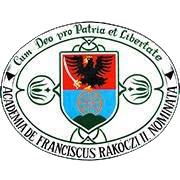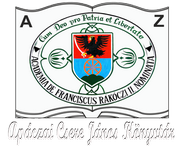Please use this identifier to cite or link to this item:
https://dspace.kmf.uz.ua/jspui/handle/123456789/502Full metadata record
| DC Field | Value | Language |
|---|---|---|
| dc.contributor.author | Szamborovszkyné Nagy Ibolya | hu |
| dc.contributor.author | Самборовскі-Нодь Ібоя | uk |
| dc.contributor.author | Ibolya Szamborovszky-Nagy | en |
| dc.date.accessioned | 2020-12-18T08:25:44Z | - |
| dc.date.available | 2020-12-18T08:25:44Z | - |
| dc.date.issued | 2015 | - |
| dc.identifier.citation | In Pro Minoritate. 2015. Tél. pp. 161-174. | en |
| dc.identifier.issn | 1216-9927 | - |
| dc.identifier.uri | http://dspace.kmf.uz.ua:8080/jspui/handle/123456789/502 | - |
| dc.description | https://docplayer.hu/113897595-Szines-rongyszonyeg-vagy-klorozott-vaszon.html | en |
| dc.description | https://prominoritate.hu/wp-content/uploads/2019/05/ProMino-1504-09-Szamborovszkyne.pdf | en |
| dc.description.abstract | A nyelvi és kulturális sokszínűség elvben gazdagabbá teszi úgy az egyént, mint a közösséget. Ám amennyiben e sokszínűséget valamely állami szerv erőltetett vagy felszínes formában akarja megvalósítani és/vagy felszámolni, az mindig ellenálláshoz vezet az egyik oldalon és újabb próbálkozásokhoz a másik oldalon. A Kelet-közép-európai kis- és közepes államok az egész 20. század folyamán arra törekedtek, hogy egynyelvű és egynemzetiségű, homogén nemzetállamokat hozzanak létre ezen a sok nyelv, sok kultúra és vallás keveredésének helyszínén, mely tágabb otthonunk. Itt, ahol nem a migráció következtében sokszínű az országok nemzetiségi összetétele. | en |
| dc.description.abstract | Abstract. Linguistic and cultural diversity may, in principle, enrich both the individual and the community. Attempts on the part of state organs at achieving or eliminating that diversity by artifical means or in a superficial manner will, however, always lead to resistance on the one hand and renewed attempts on the other. Throughout the 20th century, East-Central European small and medium sized states sought to create homogenous nation-states in a region which had been home to a diversity of languages, cultures and religions, where diverse ethnic composition is not a result of migration. At a certain stage of their nation state-building process, some of the Ukrainian intelligentsia turned to the kind of multiculturalism hitherto preferred in Western Europe, an attitude concealing aspirations to the assimilation of minorities not entitled to be part of the nation. The paper looks at the appearence of multiculturalism in Ukrainian education policy and history teaching, posing questions concerning its origins and the extent to which Ukrainian state and society with its freshly gained independence showed a permissive, inclusive and democratic attitude towards indigenous minorities; when and why a radical turnaround took place in the second half of the 1990s; how public education policy grew more radical at the turn of the century, and what a multicultural approach to education actually means in Ukraine today. | en |
| dc.language.iso | hu | en |
| dc.publisher | Kisebbségekért – Pro Minoritate Alapítvány | en |
| dc.rights | Attribution-NonCommercial-NoDerivs 3.0 United States | * |
| dc.rights.uri | http://creativecommons.org/licenses/by-nc-nd/3.0/us/ | * |
| dc.subject | nyelvi sokszínűség | hu |
| dc.subject | kulturális sokszínűség | hu |
| dc.subject | Kelet-Közép-Európa | hu |
| dc.title | Színes rongyszőnyeg vagy klórozott vászon? | en |
| dc.title.alternative | A multikulturalitás az ukrán közoktatásban és a történelmi szakdidaktikai irodalomban | en |
| dc.title.alternative | Multiculturalism in Ukrainian Public Education and History Textbook's | en |
| dc.type | dc.type.study | en |
| Appears in Collections: | Szamborovszkyné Nagy Ibolya | |
Files in This Item:
| File | Description | Size | Format | |
|---|---|---|---|---|
| SZNI_Szines_rongyszonyeg_vagy_klorozott_vaszon_2015.pdf | In Pro Minoritate. 2015. Tél. pp. 161-174. | 5.87 MB | Adobe PDF | View/Open |
This item is licensed under a Creative Commons License





